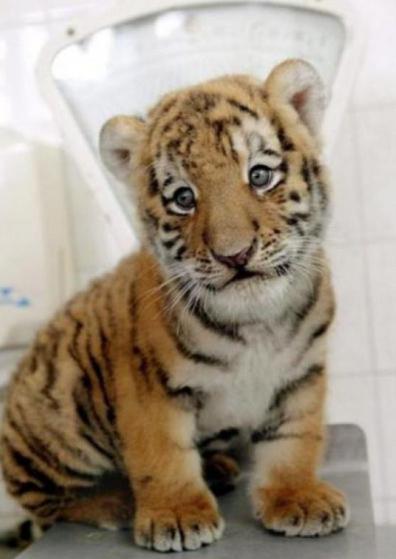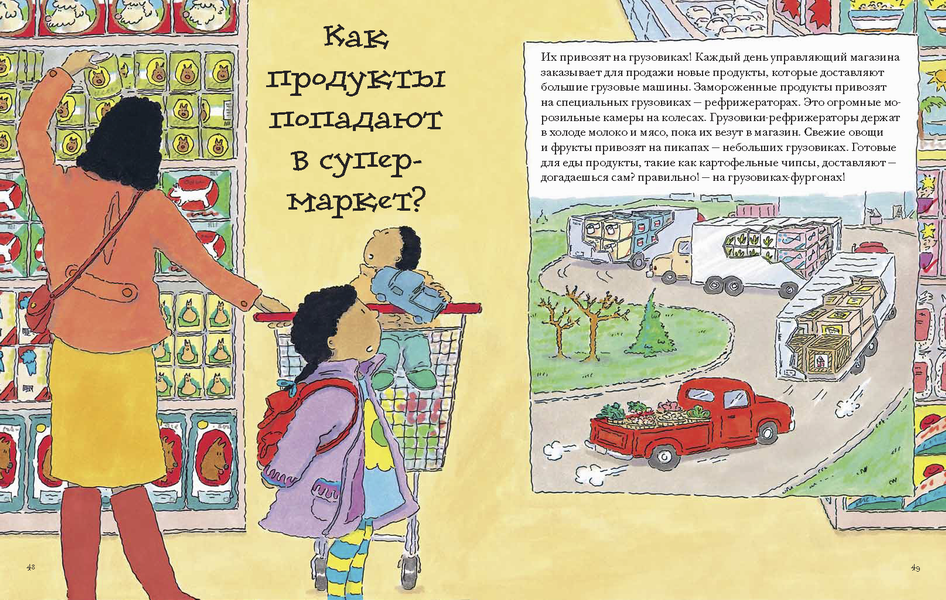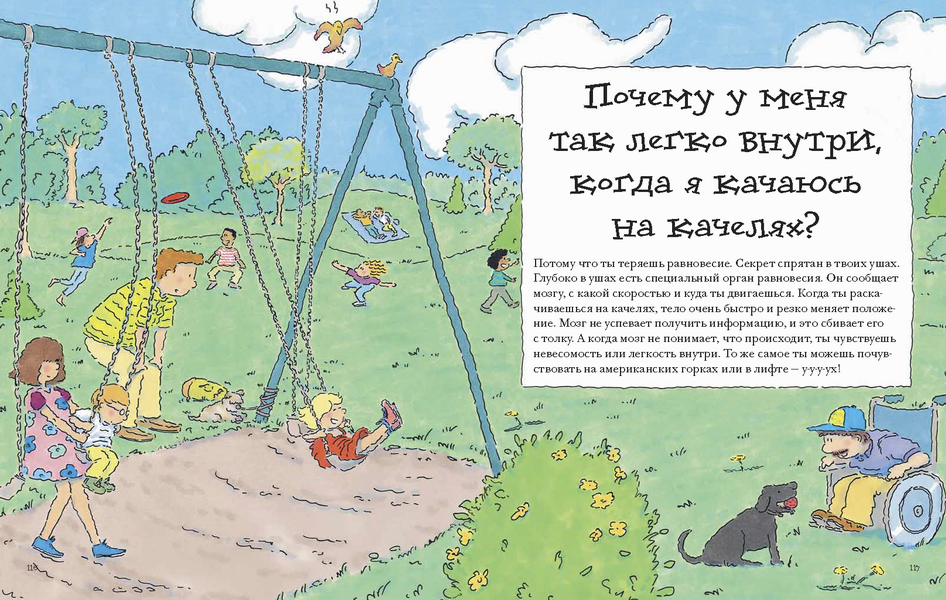“Why is the worm all naked?
Why is the dove cooing?
Why does water gurgle under the faucet?
Why are hedgehogs in thorns?
Why am I Why?
Why am I never silent?
(N. Kostarev)
So we have come the age of "why". Sometimes children’s questions confuse me, or I don’t have an answer to it, or I don’t immediately think how to answer this “why?” in a more accessible way. Yes, all these “whats” and “whys” are nothing but a way of knowing the world, and this way for children is practically the only one so far. Later they will learn to use reference literature, draw information from books, TV shows and the Internet, but for now the main source of information is close people, mom and dad. Now they are smarter and more significant for a child than all the scientists and professors combined. And such a high trust must be justified! Therefore, I started searching the Internet for suitable literature. I chose several publications that I liked, the most suitable for our age seemed to be the book of the MIF publishing house “Why? The most interesting children's questions about nature, science and the world around us, by Katherine Ripley.
A little about the author of the book
Katherine Ripley, editor of the popular Canadian children's magazine chickaDEE, has been collecting unusual questions from young readers and interviewing children in schools and libraries for several years. The result was an interesting and not at all boring book, which became a world bestseller and won many awards in Canada and the USA. The book "Why?" has been published in various languages for over 10 years.
The answers to the questions in the book are divided into several sections: in the bathroom, in the supermarket, before going to bed, on a walk, in the kitchen, in the countryside. The questions are chosen very interesting, the answers to the questions are set out in a way that the child can understand.
I liked that in the book a whole spread is given for one question, the drawings are large, clear, bright, the daughters could not be torn off the book, we read often, there were even more “why” questions after reading, now they want to know even more)) and often themselves explain everything to each other according to this book. I myself was interested in reading, learned for myself a lot of new, unknown to me. I'm glad that I got into the "top ten" with the book, but I assumed that the children would like it.
“I have six servants,
Agile, remote,
And all that I see around -
I know everything from them.
They are at my behest
Are in need.
They are called: How and Why,
Who, What, When and Where.
(R. Kipling, translation by S.Ya. Marshak)
Children can read the book on their own or with their parents. Surely among the questions there is one that your children torment you with: Why do we yawn? Why do cats eyes glow in the dark? Why do horses sleep standing up? Why do you need to sleep at all? Why the sky is blue?
The quality of the publication itself is excellent, paper is thick offset, thick cover, high-quality printing, a nice addition - a gold ribbon "lace".
At the end of the book there is a spread where you can write down "for memory" questions that your child asked.
I was very pleased with the book, my magic wand having little whys, and for children now it is a 100% hit.
What fun it is to be a parent! You can not only admire and take care of the little miracle that was born, but also relive the most wonderful moments of this bright and wonderful age together with him. At the same time, being parents is difficult, because apart from material support child with everything necessary, you need to take care of his comprehensive development.
Ready #1
All modern psychologists advise from the very first days of a child's life to closely monitor his interests and hobbies, and also to give him complete freedom of action in this regard. If a child wants to sculpt - there should be a supply of plasticine in the house, he likes to draw - colored pencils or felt-tip pens, but if a child wants to know why the tiger is striped - he needs to answer clearly and truthfully. And it is also important to be ready to answer in a simple and understandable language for the baby absolutely all questions of interest to him. Very often, parents are afraid of such moments, because mom and dad are the smartest in the eyes of the child, and, as he thinks, everyone knows. For example, the moon is in the air. How to answer clearly, and at the same time without distorting reality?
Who is smarter? Mom and Dad or the Internet?
Thanks to the availability of free access to it, you can find answers to any questions. But if, after each question received from the child, mom or dad will rush to the computer and say something like “wait, we’ll find out now ...”, it will be he who will be considered the smartest in the house, and not parents. It will be unpleasant someday to hear the phrase “mom, ask the computer ...”, so it’s better to start replenishing your knowledge when the baby is still sleeping sweetly in the crib, and it also doesn’t hurt to work out some kind of generalized answer if suddenly the question is all- still confuse.
Most Common Questions
 Children's questions most often relate to the life around them. They will not ask you about or the most common natural resources of the countries of the Far East (although, knowing modern children, this option is also not completely excluded), but that's why the tiger is striped, and it's cold in the refrigerator - easily.
Children's questions most often relate to the life around them. They will not ask you about or the most common natural resources of the countries of the Far East (although, knowing modern children, this option is also not completely excluded), but that's why the tiger is striped, and it's cold in the refrigerator - easily.
Do not take this stage in life lightly, because the baby gets acquainted with vast world, and it is on what this acquaintance will be that his performance at school and all future life. Many parents make the mistake of answering the question either strongly "smartly" or, conversely, "in a fabulous way." If for three years, answering children's why, you will repeat to the child that the sun does not fall because it is glued to the sky, and at the age of five, the son or daughter will find out how things really are, and this can be quite a turning point moment in a relationship, because it turns out that all this time you lied to him.
Let's look at the most common children's questions at the age of 2-6 and try to give at least approximate answers to them.
Why don't fish drown?
They have a special one filled with oxygen, nitrogen and carbon dioxide. It is he who does not allow the fish to drown.
Why is the moon called a month?
You can very rarely see the moon round, only a couple of days for a certain period. The period from the appearance of a thin sickle in the sky and until it turns into a full circle is called a month.
Where does the sun go at night?
The sun doesn't go down at night. Our planets are round, and when it is morning in one part, it is night in the other. Where there is light, there is sunshine.
Why is the tiger striped?
Previously, tigers were not striped, but gradually, in order to be better camouflaged, stripes appeared on their body. So the tiger practically merges with the surrounding terrain and plants.
tricky questions
![]() There can be a lot of questions, why children are absolutely normal, but if the child is indifferent to what is happening around and does not ask them, you should start to worry. Remember that the answer should always be short, concise and truthful. More information will be added as the years go by. Most of all, parents are afraid of the need to explain the procedure for conception and the birth of a child. But we are not ashamed to say that a chicken hatches from an egg, and a plant grows from a seed. This is how it can be explained.
There can be a lot of questions, why children are absolutely normal, but if the child is indifferent to what is happening around and does not ask them, you should start to worry. Remember that the answer should always be short, concise and truthful. More information will be added as the years go by. Most of all, parents are afraid of the need to explain the procedure for conception and the birth of a child. But we are not ashamed to say that a chicken hatches from an egg, and a plant grows from a seed. This is how it can be explained.
Finding a way out
 And now a little secret. Don't know how to answer? Have doubts about the correctness or availability of information or are you just embarrassed to talk about the proposed topic? Do not avoid the conversation, do not shift it to other family members, because if the child asked you specifically, it means that he trusts you. Just ask: "What do you think?". Surely he already has a certain opinion. Listen carefully, add a little of your own, and the problem is solved: the child, having satisfied his curiosity, happily runs to play, and the parents, exhaling with relief, continue to go about their business.
And now a little secret. Don't know how to answer? Have doubts about the correctness or availability of information or are you just embarrassed to talk about the proposed topic? Do not avoid the conversation, do not shift it to other family members, because if the child asked you specifically, it means that he trusts you. Just ask: "What do you think?". Surely he already has a certain opinion. Listen carefully, add a little of your own, and the problem is solved: the child, having satisfied his curiosity, happily runs to play, and the parents, exhaling with relief, continue to go about their business.
Love your children and appreciate every moment spent with them. Many years later, together with them, laughing, you will remember these stories, raising your grandchildren, who, like their parents, will ask why the tiger is striped.
All the answers for children-why-whys and their parents in the new book "Why?"
For some reason, we are sure that we know almost everything about the world that surrounds us. But you'll be surprised how wrong you are when you take our new test. And inspired us to A new book wonderful Canadian writer Katherine Ripley. See how well you can handle children's questions.
I. How does the chick get out of the egg?
- With the help of an egg tooth, a special tubercle at the end of the beak
- The chick cannot hatch on its own, an adult bird helps it
- The shell bursts itself when the chick becomes cramped
1. With the help of an egg tooth, a special tubercle at the end of the beak
II. Why do cat eyes glow in the dark?
- In the eyes of cats there is a special element, like a flashlight, which turns on at dusk.
- People just think that cats' eyes glow
- In the depths of the eyes of cats there are special cells, like a mirror, that reflect light.
3. In the depths of the eyes of cats there are special cells, like a mirror, that reflect light.

III. Why are some eggs brown and others white?
- In fact, all are brown, and whites are specially bleached with bleach.
- White hens lay white eggs and red hens brown
- It depends on the diet of the chickens - free-range chickens lay eggs of a more saturated color.
2. White hens lay white eggs, and red hens lay brown.
IV. Why are peaches hairy?
- Villi on the skin protect the peach from infections
- The villi are specially created by gardeners so that the peach looks beautiful.
- Villi protect from early frosts, like fur
1. Villi on the skin protect the peach from infections

V. Why does the onion sizzle in the pan?
- When heated, the onion cracks and makes such a sound
- These are water drops from an onion bouncing with such a sound.
- It breaks down phytoncides, special substances that kill bacteria
2. These are water drops from an onion bouncing with such a sound
VI. Why do only some goats have horns?
- Some baby goats have their horns trimmed at birth.
- It all depends on the breed of goats - hornless goats are grown for farms, they are more peaceful
- Aggressive goats lose horns in fights, losing goats no longer grow horns
1. Some baby goats have their horns trimmed at birth.
![]()
VII. Why do piglets wallow in the mud?
- To keep them cool and pleasant
- Pigs are slandered: they wallow in the mud no more than other animals.
- They feed on earthworms for medicinal purposes.
1. To keep them cool and pleasant
VIII. Why does food get cold when you blow on it?
- Cold air mixes with hot air and the food becomes warm. This is how we mix tap water
- Food cools down on its own under the influence of room temperature, it does not matter at all whether we blow on it or not
- We blow off the steam that rises above the plate of hot food. And the steam acts like a blanket, helping food stay hot longer.
3. We blow off the steam that rises above the plate of hot food. And the steam acts like a blanket, helping food stay hot longer.

IX. Why is my stomach growling?
- It's inside the air is noisy from hunger. When all the food is digested, the stomach and intestines drive air back and forth
- This is how a special valve in the stomach works. It turns on as an SOS signal in case of hunger.
- The whole body, not just the stomach, can rumble in case of hunger or good mood.
1. It's inside the air is noisy from hunger. When all the food is digested, the stomach and intestines drive air back and forth
X. Why is the sky blue?
- It's not blue, it's an optical illusion
- Due to wave scattering blue color that come from the sun
- The blue sky is the line between the blackness of space and the light of day
2. Due to the scattering of blue waves that come from the sun
- If you answered 8 out of 10 questions correctly, you are a true guru of children's whys. Most likely, you have at least three children or one, but a terrible "why". Congratulations!
- If you answered 5-7 questions correctly, then you are a candidate child why expert. You can slightly strengthen the theoretical base, but your knowledge already deserves respect.
- If you answered 4 or less questions correctly, then you are a new parent.. You urgently need to buy children's encyclopedias. And then no question will confuse you any more.
The test is based on the book by Katherine Ripley
